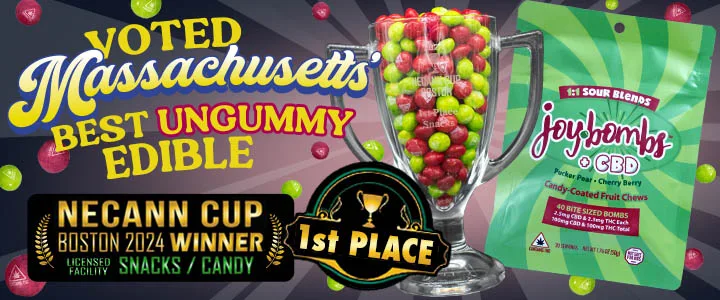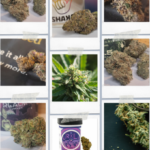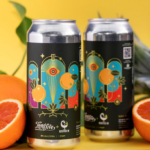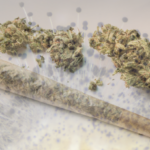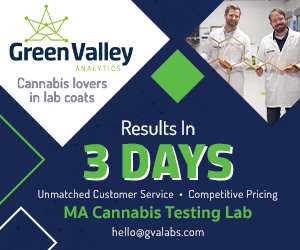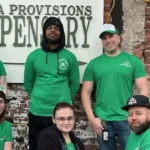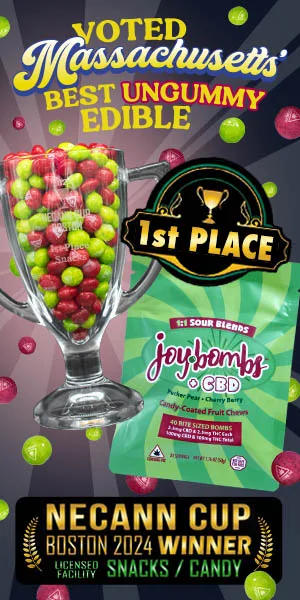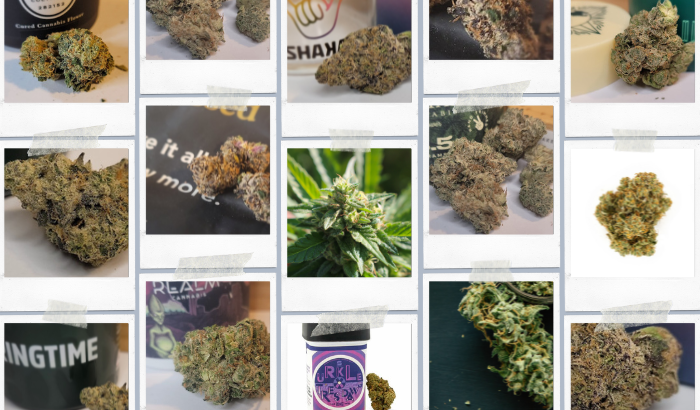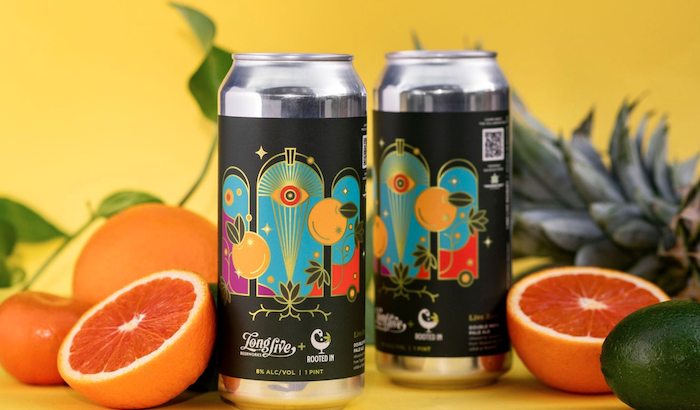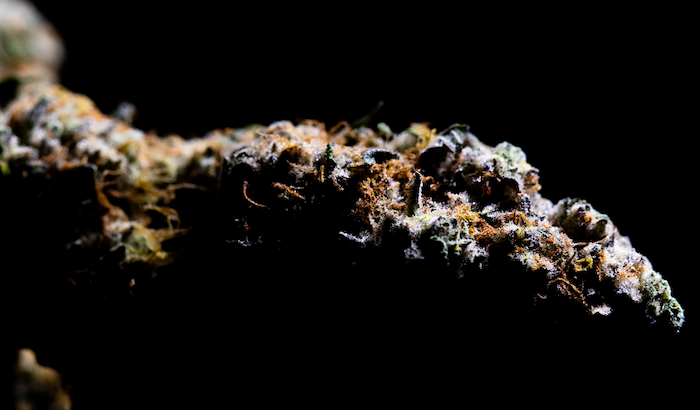
“One of the things I am happiest about this test is that our other cannabinoids were very robust while still having a high THC percentage”
We say it all the time—there’s more to life than Total Active Cannabinoids (TAC). And we mean it.
At the same time, we do like getting very stoned, and just can’t help ourselves when we see numbers in the 30% range. Such flower feats should be applauded, and so we kind of flipped upon hearing that Cannalive Genetics broke 40% in tests for a strain they’re developing.
That kind of potency is basically unheard of, and since it was triple-checked and confirmed by SafeTiva Labs, we reached out to Cannalive CEO Todd Dahn for some details. He was reluctant to share everything, since the Holyoke-based business doesn’t have products on the shelf just yet, but we still learned quite a bit about their unique business plan and exceptionally high-TAC tests to date …
Let’s make this a quickie, since we want to visit once you’re up and running, but in short, what’s the concept behind your company?
Cannalive was started as a way for me to be able to give back to the people and communities that have helped to sustain me for the last three decades of my professional music career. That is why lots of the things we do are either tied to music events, tied to helping people build lasting careers and generational wealth through their art, or tied to giving back to various parts of communities that are underserved in resources.
Second, there was just a lot of really bad weed on the market when I noticed how previous states went through the same process—bad weed at the launch of the market, and then great weed as it matured, and I knew we could occupy that second space.
Why are you especially positioned to run such an operation? What’s your background in the music and entertainment industry?
I spent the last 28 years working in the music industry in almost every capacity behind the scenes. A large part of what I focused on was helping artists create innovative awareness engagement campaigns for their music in a very crowded CD shelf at first and then digital space as the world changed. This directly translates to helping people find and consume our products in a very crowded dispensary “shelf.” I had artists using Discord to build communities and talk directly to fans a few years before the pandemic for example.
From a brain chemistry level, the dopamine released when we consume music and marijuana is very similar, so things we did to make people notice and consume music will make them also notice and consume marijuana. The lessons I learned in the last three decades will help me make sure people want to find us and enjoy what we are bringing to market.
My partner and I also have a combined almost 20 years of growing experience, which is what allows us to have confidence that we can produce flower that people will want to consume.
OK, now let’s get to the subject at hand—the outrageously high TAC test on one of the strains you’ve been working on. So first, what’s that like? The process? Growing with eyes on a license, trying to figure out what strains you’re going to bring to the market? What does it usually test like? And tell us more about the surprise of your test. Do you have any idea how this happened? Anything in particular you have been doing?
We were flabbergasted by the test if I am being honest.
The strain had been testing in the mid 30s for over a year with the THC being close to the total TAC, so we were happy with it and were just running various stress tests on it to see what would happen as the license can take a while. Stress tests like growing a few extra weeks, leaving lights on or off during flower cycle, changing VPD or nutrient regiments, etc.—all with the goal of stressing out the plant to coax it to produce more cannabinoids/terps and crystals as protection from the stress.
One of the things I am happiest about this test is that our other cannabinoids were very robust while still having a high THC percentage, so the smoking experience is well rounded and not rooted in couchlock and is what really helped push the TAC over 40.
For the team and I, the things we started to look for once the license came into play were not only good looks and great smoke but also high terps and high plant production. We’re pushing these plants to their limits to make sure we can squeeze the most out of each run as we’re only producing small batches each harvest so we don’t oversaturate the market with our particular products, so each plant has to produce a certain amount to make sense. There have been some really great strains we’ve looked at that just couldn’t make the cut because they just couldn’t produce the amount per plant that we need, especially as the market corrects from the super high wholesale prices of a few years ago.
As for the high-test, what’s the strain? Where does it come from?
I can’t tell you the name yet as that will be revealed as we announce the artist attached to it in the coming weeks, but here is how it came about: this strain has been in development ever since 2019, when I managed the Epic Beard Men tour and found a strain in Portland or Seattle, I can’t remember which now, that blew me away, and immediately had my buddy grab seeds to pop. We weren’t even looking at a license at that point, we just wanted something in the 30s to smoke as that was rare a few years ago.
We hunted a good pheno from about 50 seeds, and started working on it. We had a few other strains we were growing; I think Blueberry Headband was one, Jack Herer, and a couple others that we ended up not keeping as we transitioned to working for the license due to output per plant issues.
I saw a video on breeding using RO water laced with pollen that you sprayed on a plant so you didn’t have pollen in the air and got the bright idea to try it, so we reversed one of the strains and dumped it into this and just kept going. Most of what we’ve done has come from me watching people like the Jungle Boys, SeedJunkies, CannaCribs, 710 Labs, and other folks out west share tricks and such they learned in the years their market has been open and we just tried things and kept what worked for us.
I decided we as a company would focus on terps and other cannabinoids as well as THC so that as the market matured, we were able to stay on the leading edge of the change instead of playing catchup with other people’s products and this is just the beginning.
Before this high-TAC test, how’s everything been going?
Things have been going great. The process with the CCC is an ever-evolving set of rules that I just have had to learn to adapt to as they continue to work out the marketplace and the rules that govern it.
Holyoke presented some challenges, but thankfully with the support of the great city government there we were able to get construction completed.
We have three other strains in various stages of development which I am incredibly proud of and excited to bring to market. We’re looking at expanding right away on the cultivation facility to add new strains with new artists attached to them.
So, now that you’ve conquered the four-minute mile before even starting the race, where do you go from here?
Growing the plant was just the start of the mile for us, the real race is making sure we have the impact with our revenue that we hope to have, and making sure we keep the same values as a company as we grow. We have new strains to introduce, new artists, and events to bring to the Boston market and a social consumption facility that will blow everyone away coming in the next few years.


